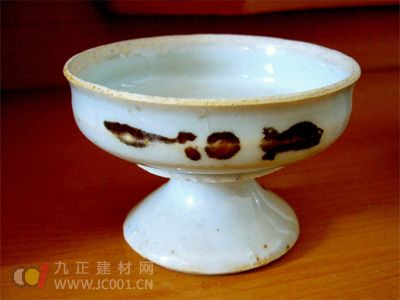The process of applying red glaze is very similar to that of blue and white porcelain. A transparent glaze is applied and fired at high temperatures. However, the key difference lies in the coloring agents used—blue and white relies on cobalt, while red glaze uses copper-based materials.
Red-glazed porcelain from the Yuan Dynasty typically exhibits certain distinctive features. The body is usually thicker compared to blue and white pieces from the same period. In the early stages, there were more white dragons, while towards the end of the Yuan era, white bodies became more common. You can often see clear turning marks and wheel marks on the surface. The early glaze was pale blue or grayish-white, with high transparency and a glassy finish. By the end of the Yuan Dynasty, the glaze turned into a light red, oily white color, and the bright, clear white glaze seen on large blue and white pieces was no longer present. The red color was unstable, ranging from light red to deep red, often mixed with gray tones, and exhibited varying degrees of halos. These effects were most commonly found along the edges where the copper red pigment was applied. Due to the high firing temperature, many pieces showed signs of burning.

The decorative techniques used for red glaze during the Yuan Dynasty were less advanced compared to those of blue and white porcelain. In the early period, red glaze was often applied using a smearing technique. Some pieces had raised patterns on the body, with red glaze filled around them to create contrasting red and white designs, while others used stencils to apply red glaze, forming white floral patterns. As time progressed, especially toward the end of the Yuan Dynasty, red glaze began to be used in line drawings, though the technique remained simple—essentially sketching and lightly coloring.
Because the heat from blue-and-white glazing lasted a long time, red glaze became popular, leading to many imitations. According to some unreliable sources, these imitations are easily distinguishable from authentic pieces. However, there are specific characteristics to look out for when identifying fakes. For example, the body may be too thin, the base may lack clarity or show artificial kiln red. The glaze could appear gray, rough, dirty, or dry, lacking the glossy, moist appearance of genuine pieces. The red color might be too dark or uniform, without the natural variation of gray or mossy green, and there may be no signs of burning. Some imitations use different pigments, resulting in an unnatural hue. Additionally, some patterns mimic Ming or Qing styles, while others try to replicate the shape of blue-and-white porcelain. Despite this, they cannot be classified as true Yuan-era red-glazed porcelain. Their painting methods differ significantly from those of large-scale blue-and-white pieces. Many so-called "Da Yuan" inscriptions are also fake.
(Word count: 517)Led Plastic Panel Light,Led Frameless Plastic Panel Light,Led Embedded Round Light,Frameless Round Panel Light
Foshan Extrlux Co., Ltd. , https://www.extrlux.com